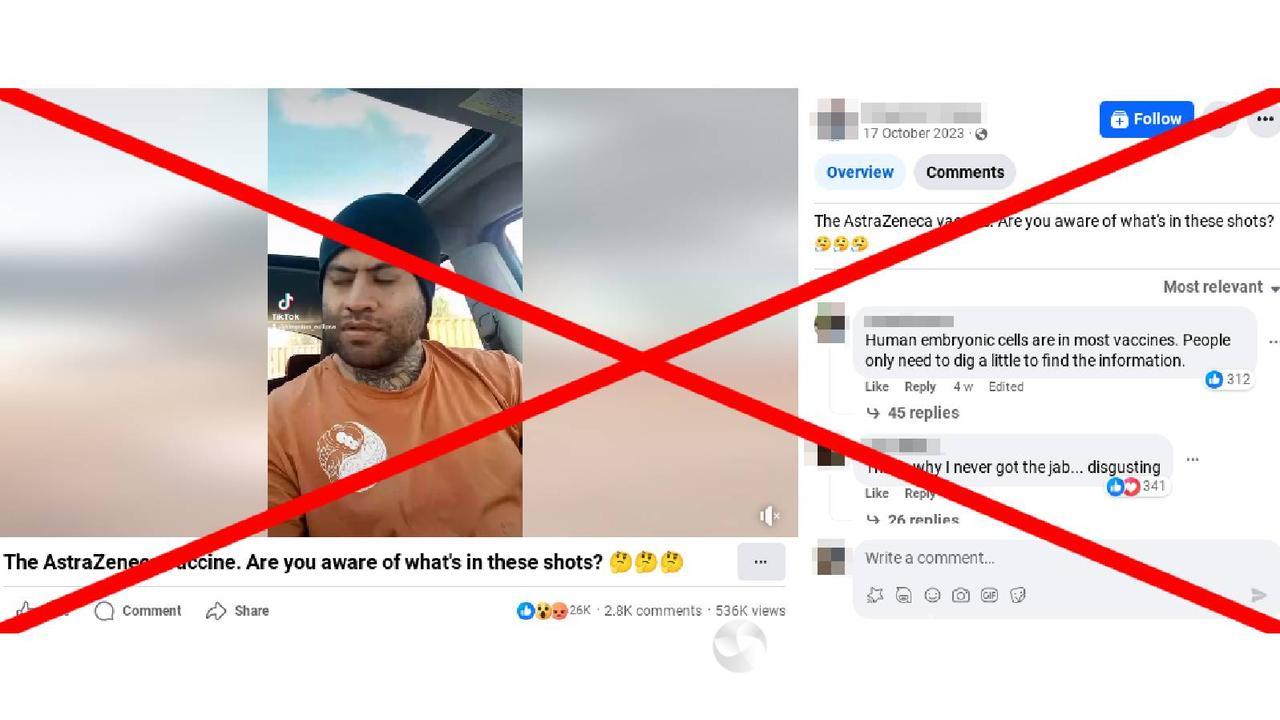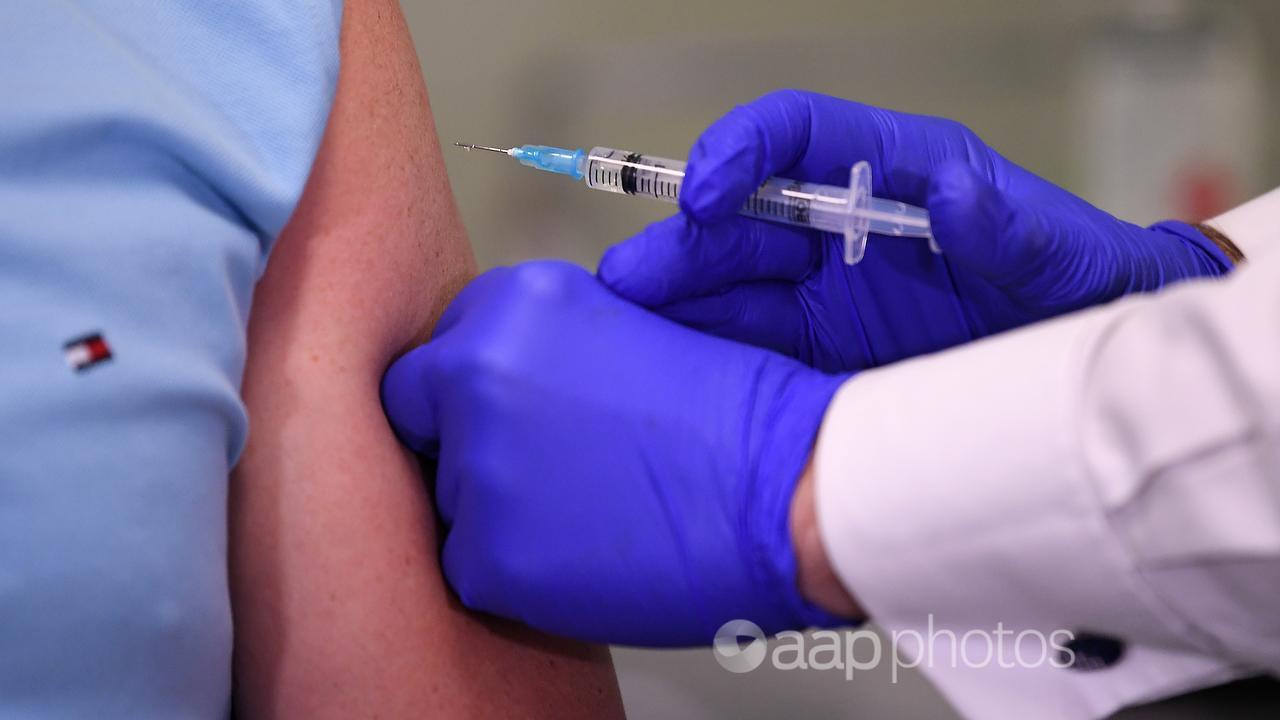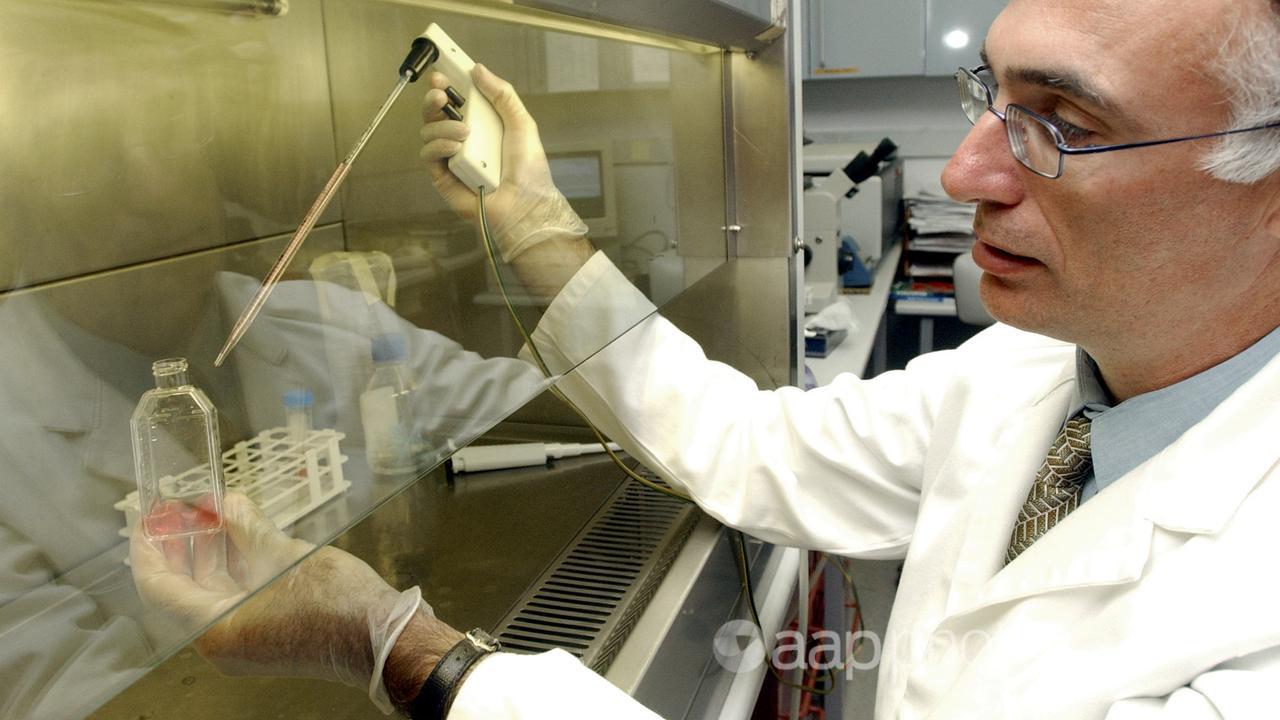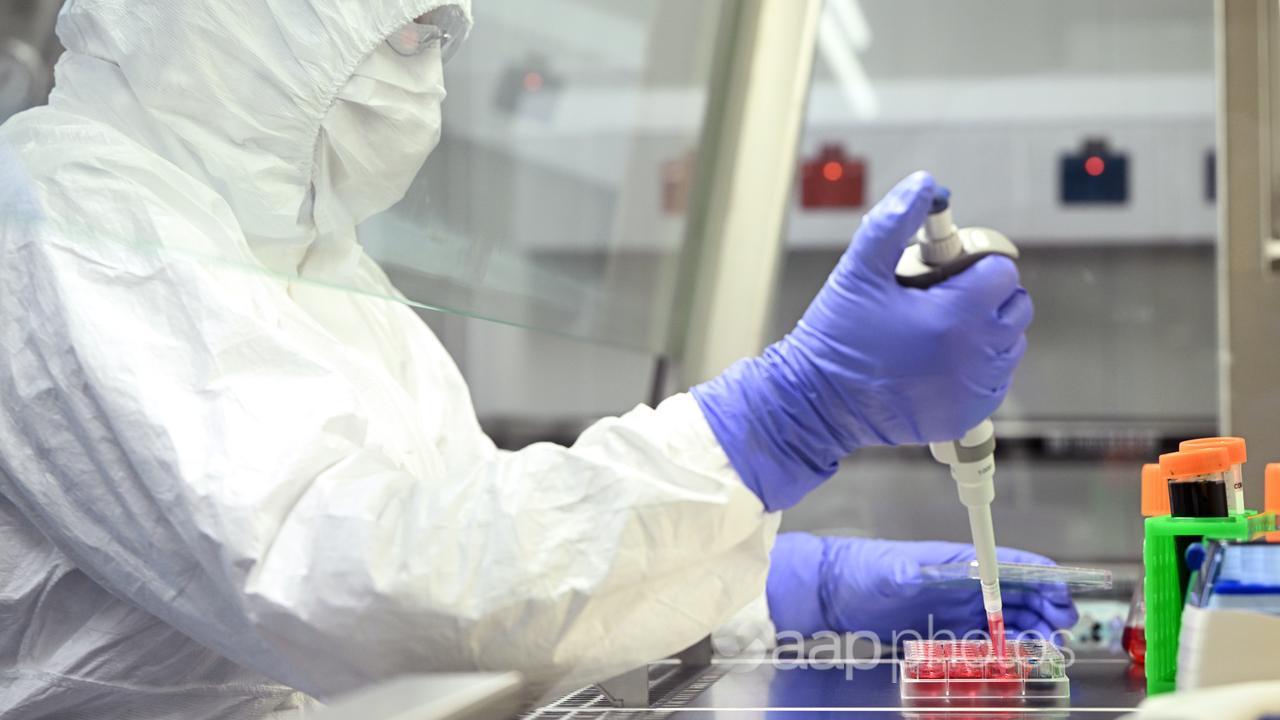Claims the AstraZeneca COVID-19 vaccine contains cells from an aborted fetus are again spreading on social media.
The claims are false. The AstraZeneca vaccine, known as the Vaxzevria in Australia, was developed using cells originally derived from a human embryo more than 50 years ago.
But experts told AAP FactCheck the vaccines do not contain any fetal cells, or pieces of fetal DNA.
The claim was made in a Facebook video, titled “The AstraZeneca vaccine. Are you aware of what’s in these shots?”

“I actually looked up the ingredients for this vaccine,” the man in the video says. “As you can see it says human embryo kidney cells, HEK-293.”
He adds: “So are you trying to tell me that the ingredients, or part of the ingredients, in this vaccine … has like, cells from an aborted female fetus?
“Really? Is this the s*** you’re putting in your bodies? That’s what’s in that f***ing vaccine.”
However, experts say the claim is wrong.
Human Embryo Kidney cells (HEK-293 cells) aren’t listed as an active or inactive ingredient of the vaccine.
However, the HEK-293 cell line is used in the manufacturing process, according to public information sheets on the vaccine.

The cell line was originally “derived in 1973 from the kidney of an aborted human embryo of unknown parenthood”, but has since been heavily modified and immortalised.
These cell lines are used to create “producer cells” which act as “mini-factories” to produce the vaccine rapidly, the AstraZeneca website says.
Cell lines have also been used in the production of vaccines for rabies, hepatitis A, chickenpox and shingles, among others.
New Zealand immunologist Professor Graham Le Gros said the cell line is “so far away from being a fetus or fetal derived”.
Even so, Prof Les Gros, the director of the Malaghan Institute of Medical Research in Wellington, said the cell line is not part of the final vaccine.
“HEK-293 cell lines are used to manufacture or produce vaccine components by secreting virus particles from the cell,” Prof Les Gros told AAP FactCheck in an email.
“However, the HEK-293 cells and all their constituents are purified away from the viral vaccine components.”

AAP FactCheck has debunked similar claims about fetal cells in vaccines in 2020 and again in 2022.
University of Auckland vaccinologist Dr Helen Petousis-Harris told AAP FactCheck in 2020 that no cells of any kind are part of the final vaccine formulation.
Several University of Melbourne professors wrote in a 2020 article that: “Even though the descendants of foetal cells are used to produce the vaccine, the actual vaccination does not contain any foetal cells, or pieces of foetal DNA.”
Prof Le Gros says vaccine production is closely scrutinised.
“The manufactured products from any HEK-293 cell line (whether it be vaccine or medicine) is stringently monitored by independent analytical laboratories,” he said.
“Independent regulatory agencies will not release for human use any medicine that shows it is contaminated with any non-vaccine product such as the HEK-293 cells.”
False claims about fetal cells in vaccines have been widely shared throughout the COVID-19 pandemic and consistently debunked, including by HealthDesk, the Associated Press, Reuters, Snopes, and FactCheck.org.
The Verdict
The claim that the AstraZeneca COVID-19 vaccine contains human fetal cells is false.
The vaccine was developed using material originally sourced from a human embryo, the HEK-293 cell line.
The line has been modified and immortalised and no longer contains fetal cells.
Regardless, HEK-293 is only part of the manufacturing process and the line is not an ingredient of the final vaccine.
False – The claim is inaccurate.
AAP FactCheck is an accredited member of the International Fact-Checking Network. To keep up with our latest fact checks, follow us on Facebook, Twitter and Instagram.
All information, text and images included on the AAP Websites is for personal use only and may not be re-written, copied, re-sold or re-distributed, framed, linked, shared onto social media or otherwise used whether for compensation of any kind or not, unless you have the prior written permission of AAP. For more information, please refer to our standard terms and conditions.


















